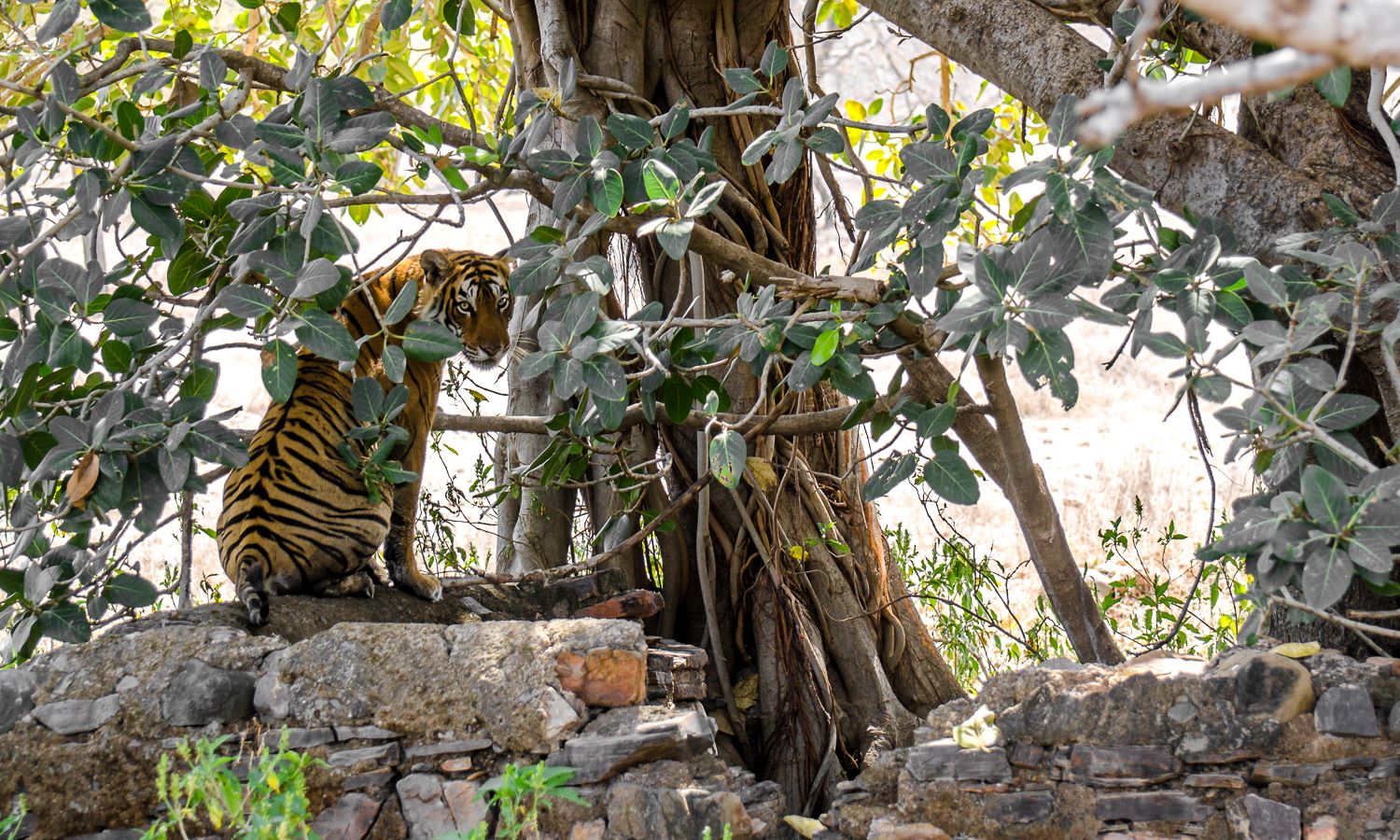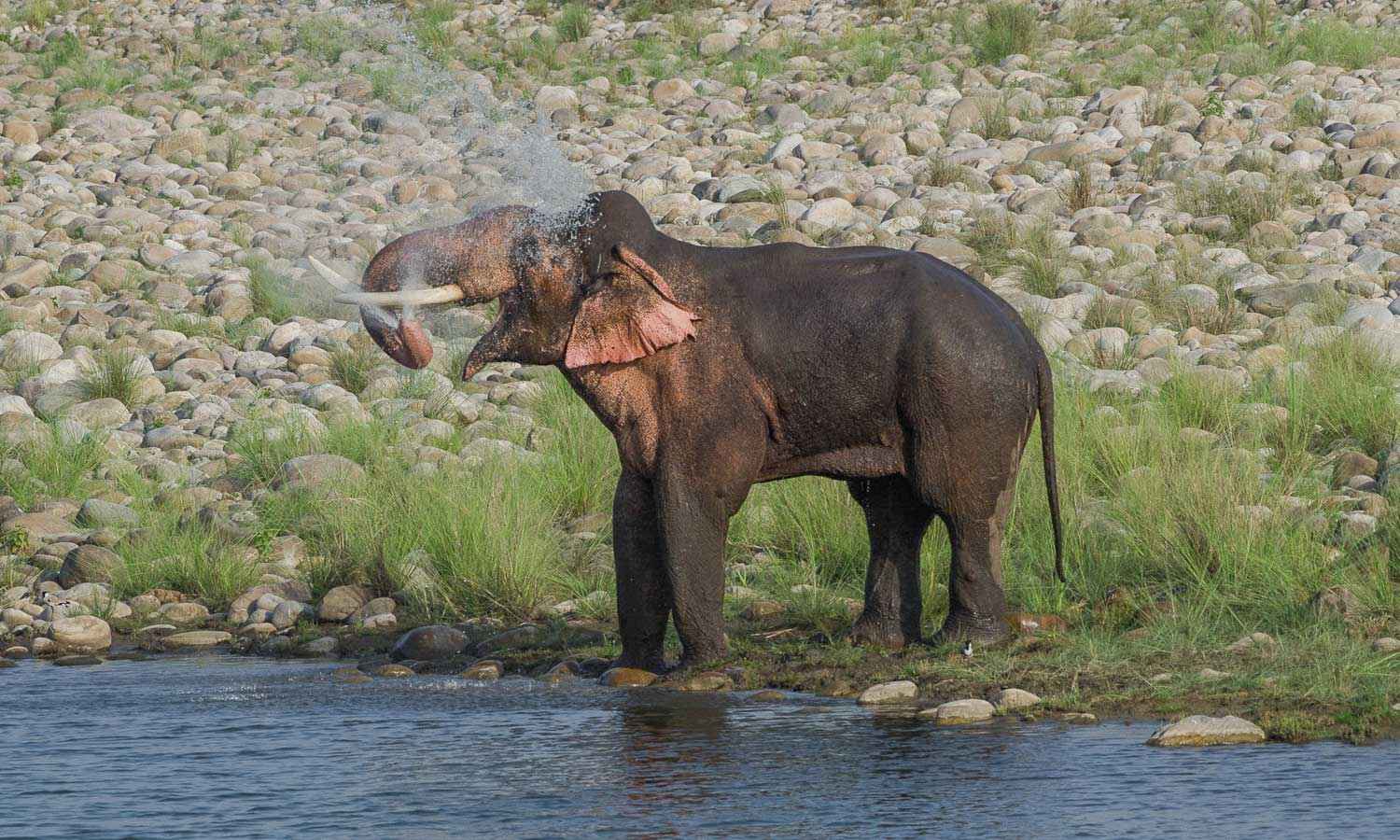History
Location
Nestled at the meeting point of the mighty Aravali and Vindhya hill ranges, Ranthambore National Park is a tapestry of wildlife. This enchanting confluence is the secret behind the park's rich biodiversity. Picture this: the Vindhyan with its flat tabletops, which we knew as Dang in the local language, and the Aravallis with sharp ridges and majestic conical hilltops. This geological marvel unfolds before your eyes when you plan to go on a Ranthambore Jungle Safari.
Sighting at Ranthambore
Safari Tracks in Ranthambore
This Tiger Reserve boasts an exceptional network of forest tracks. These safari tracks in Ranthambore are originally well-trodden animal pathways. This holds especially true for tigers. Their paws have incredibly soft pads that allow them to move silently. It is an important adaptation for successful hunting. As a result, these majestic creatures choose the safari tracks since they have soft sand, minimal thorns, rocks, and dry leaves.
Later, these are thoughtfully widened to accommodate safari vehicles. As a result, you'll witness an abundance of magnificent wildlife, with mega-fauna generally spotted along or near these forest tracks. Witnessing a tiger's graceful stride along these tracks will really give you chills during the Tiger Safari in Ranthambore.
Contact Tigerwalah to Better Your Chances for Tiger Sightings
Spotting tigers in the wild is a thrilling game of chance. But don't worry! There are ways to improve your odds. Before embarking on Forest Safari in Ranthambore, it's essential to gather insights on recent tiger movements. In this case, Tigerwalah's local guides and expert drivers are an invaluable source of information. They have great observation skills and exchange with fellow guides to stay updated. By understanding the recent patterns, the chances are higher for tiger sightings.
For example, if a tiger has made a kill near a specific spot, chances are it will roam in the vicinity. So, with a little strategic planning and the guidance of knowledgeable naturalists, you make the most out of the Tiger Safari in Ranthambore. To know more about the movements of tigers, refer to daily Ranthambore sighting updates.
Climate
Ranthambore Jungle has three seasons: summer, winter, and monsoon.
Summer sets in from March, lasting through April, May, and June. Daytime temperatures can soar past 40 degrees Celsius. Nights remain a balmy 30 degrees Celsius. May and June witness blistering highs above 45 degrees Celsius. The climate is mostly accompanied by minimal humidity. Monsoons arrive in July with refreshing rains that last till September. The lush greenery springs to life while the air is thick with anticipation.
Winter envelops Ranthambore from November to February. Nights are chilly, with temperatures dipping below 10 degrees Celsius. The temperature for daytime hovers around a pleasant 20 degrees Celsius. December and January witness the coldest nights. During this time, temperatures may plummet to 2 degrees Celsius.
Safari
The forest department conducts Ranthambore Tiger Reserve safaris twice a day. You can enjoy explorations across 10 designated tourism zones within the park. You can choose between a 6-seater jeep or a 20-seater open bus (cantor). It's important to note that Zones 1-6 are premium zones. It allows a maximum of 50 vehicles. Each route accommodates up to 8 vehicles at a time comprising three gypsies and five cantors.
The forest department allows pre-booking of safari routes. During the booking process, you can reserve your preferred route. You can also request a route change at the time of issuance of the boarding pass by paying an additional fee subject to availability. Please note that route change is at the discretion of the forest department.
Vehicle and guide assignments operate on a roster system. However, if you prefer to have the same vehicle and guide throughout your safari, you have to pay an additional fee of INR 6800 and INR 1600 per Jungle Safari in Ranthambore.
A typical Tiger Safari in Ranthambore shift lasts approximately 3.30 hours. The timing is adjusted to align with the changing seasons. Safaris usually commence half an hour after sunrise and are completed half an hour before sunset.
Ranthambore Jungle Safari Timings
| Period | Morning | Evening |
| From 1st Oct to 31st Oct | 06:30 am - 10:00 am | 02:30 pm - 06:00 pm |
| From 1st Nov to 31st Jan | 07:00 am - 10:30 am | 02:00 pm - 05:30 pm |
| From 1st Feb to 31st Mar | 06:30 am - 10:00 am | 02:30 pm - 06:00 pm |
| From 1st April to 15th May | 06:00 am - 09:30 am | 03:00 pm - 06:30 pm |
| From 16th May to 30th June | 06:00 am - 09:30 am | 03:30 pm - 07:00 pm |
Zones 1-5 of Ranthambore National Park are closed on Wednesday (full day) and zones 6-10 are closed on Tuesday (full day)
Seasonal closure: 1st July to 30th September. Zones 6-10 remain open during this period as well.
About Ranthambore Fort
Ranthambore Fort is situated within Ranthambore National Park. It is a UNESCO World Heritage Site in Rajasthan. Its origins date back to 944 AD. It stands as the second-largest fort in the state. Once a stronghold of the Chauhan dynasty, the fort became a symbol of resistance against the Sultanate of Delhi. Today, visitors can explore its ancient walls and discover Hindu temples. These temples are dedicated to Ganesh, Shiva, and Ramlala ji. You can also find a Jain temple. The famous Trinetra Ganesh temple attracts millions of visitors each year. From the entry gate at Jogi Mahal is a leisurely walk of 1.5 km that leads to the fort's summit. It provides panoramic views of the surroundings.
Quick Facts:
Area: 1334 square kilometers
Latitudes: 25 46?N to 21 12?N
Longitudes: 76 17?E to 77 13?E
The nearest town and railway station: is Sawai Madhopur, 12 kilometres from the camp
Nearest Airport: Jaipur, approx. 170 km
AV. elevation: 350 meters M.S.L.
Annual rainfall: 800 mm
Geography: Two hill systems meet in the forest: the Aravali and the Vindhya ranges.
If you wish to seek more information or require booking assistance for Wildlife Tours in Ranthambore, feel free to write to us.
Get In Touch
Ready for an adventure? We're here to help.













